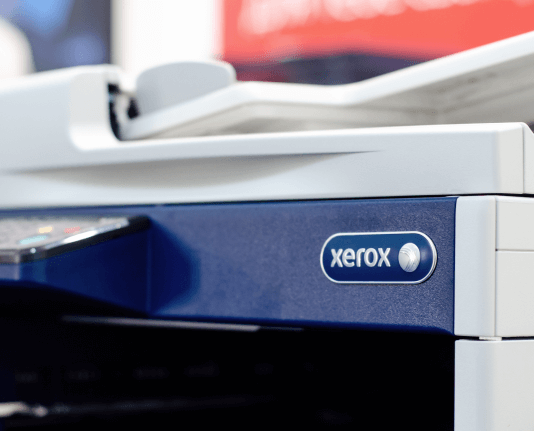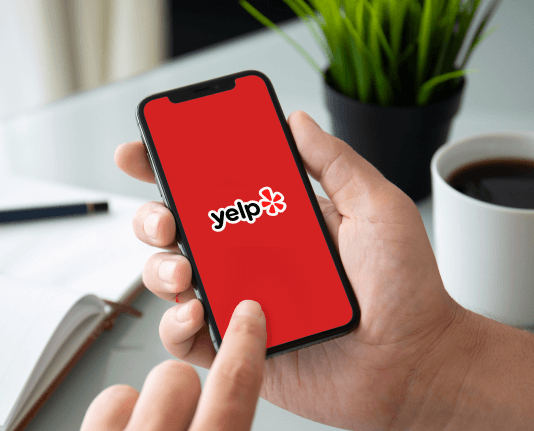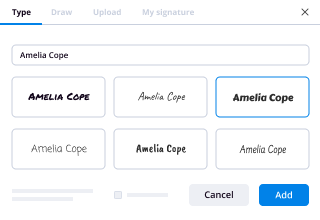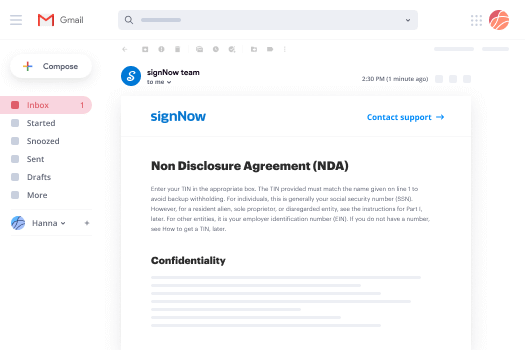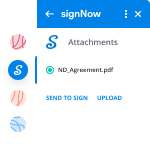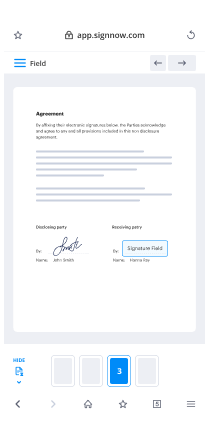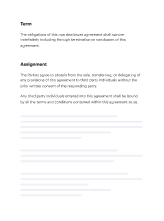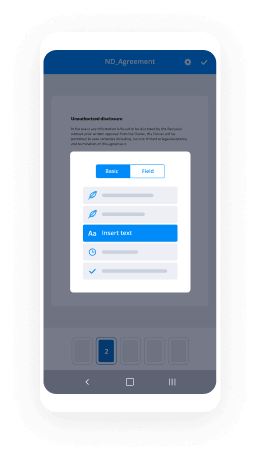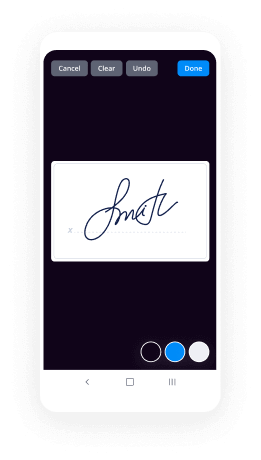eSignature Document for Legal Secure
Make the most out of your eSignature workflows with airSlate SignNow
Extensive suite of eSignature tools
Robust integration and API capabilities
Advanced security and compliance
Various collaboration tools
Enjoyable and stress-free signing experience
Extensive support
Keep your eSignature workflows on track
Our user reviews speak for themselves






Advantages of Tailored Legal Documents with airSlate SignNow
In the realm of managing tailored legal documents, airSlate SignNow provides a robust and intuitive solution for organizations of various scales. This platform enhances the procedure of document signing and administration, guaranteeing productivity and safety. Whether you are developing templates or dispatching documents for signatures, airSlate SignNow simplifies each phase, making it the preferred option for bespoke legal documentation.
Developing Tailored Legal Documents with airSlate SignNow
- Launch your web browser and visit the airSlate SignNow homepage.
- Sign up for a complimentary trial or log into your current account.
- Choose the document you want to upload for signing or distribution.
- If you intend to use this document often, transform it into a reusable template.
- Access your uploaded document and personalize it by adding fillable fields or required information.
- Sign your document and incorporate signature fields for any involved recipients.
- Click 'Continue' to set up and send out the eSignature invitation.
By leveraging airSlate SignNow, you can improve your workflow for tailored legal documents, ensuring a smooth signing experience for all parties engaged. Its powerful features enable effortless scalability and flexibility to accommodate the requirements of small to medium-sized enterprises.
Prepared to revamp your document management workflow? Initiate your free trial with airSlate SignNow today and explore how its clear pricing and outstanding 24/7 assistance can enhance your business!
How it works
Rate your experience
-
Best ROI. Our customers achieve an average 7x ROI within the first six months.
-
Scales with your use cases. From SMBs to mid-market, airSlate SignNow delivers results for businesses of all sizes.
-
Intuitive UI and API. Sign and send documents from your apps in minutes.
A smarter way to work: —how to industry sign banking integrate
FAQs
-
What are custom legal documents and how can airSlate SignNow help?
Custom legal documents are tailored agreements or contracts that meet specific legal requirements for your business. With airSlate SignNow, you can create, customize, and manage these documents easily, ensuring they comply with legal standards while streamlining your workflow.
-
How does airSlate SignNow ensure the legality of custom legal documents?
airSlate SignNow follows industry-standard security protocols and offers features like audit trails and secure storage to ensure the legality of your custom legal documents. Our platform also includes templates that you can customize to meet specific legal requirements, giving you peace of mind.
-
Are there any costs associated with creating custom legal documents in airSlate SignNow?
While airSlate SignNow offers a free trial, there are subscription plans that provide access to advanced features for creating custom legal documents. The pricing is competitive and designed to be cost-effective for businesses of all sizes, allowing you to choose a plan that fits your needs.
-
Can I integrate airSlate SignNow with my existing software for custom legal documents?
Yes, airSlate SignNow integrates seamlessly with various software applications, including CRMs and document management systems. This integration allows you to create and manage custom legal documents directly within your existing workflow, enhancing efficiency and productivity.
-
What features does airSlate SignNow offer for creating custom legal documents?
airSlate SignNow provides a user-friendly interface, customizable templates, and advanced editing tools for creating custom legal documents. Additionally, features like eSignature, collaboration tools, and document tracking make it easy to manage and finalize your agreements.
-
How can I ensure my custom legal documents are secure with airSlate SignNow?
Security is a top priority at airSlate SignNow. We use encryption and secure servers to protect your custom legal documents, alongside features like multi-factor authentication and access controls to ensure that only authorized users can access sensitive information.
-
Can I collaborate with others on custom legal documents using airSlate SignNow?
Absolutely! airSlate SignNow allows for real-time collaboration on custom legal documents. You can share documents with team members, assign roles, and track changes, making it easy to work together and finalize agreements efficiently.
-
What is the point of having an e-signature on documents when the (image) can easily be copied or misused in future documents?
So I'm the founder and CEO of ApproveMe and the WP E-Signature WordPress plugin which focuses 100% on legally binding documents and UETA & ESIGN compliance in the WordPress space.Being an eSignature geek myself, I have the same concerns you do about the vulnerability of storing images of a signature on a server... unlike many eSignature WordPress add-ons (Gravity Forms, Formidable Pro, etc) our WordPress eSignature plugin does not save images but rather tracks the unique mouse strokes of the signature, we assign a unique serial number to that sequence of mouse strokes and encrypt it in your database (so it's not easily accessible). If someone so much as alters one dot of a signers signature the Audit Trail serial number updates itself and will not match up with the serial number emailed to ALL signers at the time of signing their document. If this were to happen you could prove in court that the document was tampered with.
-
What should I look for in an eSignature Solution?
One of the main purpose of an e-signature solution is to get all your contracts signed in minutes, and become more paperless.Nowadays, there is a great diversity of e-signature apps, for different prices and different needs.You may gaze at signNow app.Also, you may check Comparative Analysis of eSignature Solutions .
-
How do I add digital signature by SDK?
Some SDKs on the market allow digital signatures, and some do not. You need to find the right SDK, and the right document format. I recommend trying PDF SDK by Kdan Mobile. They have been developing apps for PDF for over 10 years, and PDF Reader, the popular PDF editor, has over 50 million downloads on the iOS and Android app stores, and is also available on Windows and Mac OS. Coupled with this system is signNow, an e-Signature back-end to create, manage, and request e-Signatures from whoever you want, and create legally enforceable documents. Since signNow is built into PDF Reader, ...
-
How do I prove that e-signature is forged and was not signed by me?
The answer may be more complicated than you expect. Please note that I am not providing any legal advice in sharing my answer on Quora.First, what is the context behind the need to show that an E-signature is forged? If it is to challenge the enforceability of an agreement, sometimes claiming a signature is not your signature may not be as effective if you and another party already started to perform your obligations under the agreement. There would be other theories to enforce such agreements, such as the agreement is implied by the conduct of a party, or that value already has been provided and should be compensated.Getting back to the question of disproving a signature, one way to challenge the signature is to prove that it was not sent by you. Normally, the major electronic signature services such as signNow and signNow capture the IP address of the party submitting the signature. If such a service was used, you can show that the IP address did not come from a location where you work or reside, meaning that the signature cannot be attributed to you. A similar approach could be taken when an email is sent with a purported signature. Again, an IP address rooted in one country may show that the signature did not come from you if you are located in another territory. Also, the same can apply for any signatures sent by facsimile. Telephone numbers normally are captured when a facsimile is sent, and a number that is not associated with you may be an indication that the signature did not come from you. As you can see, there are multiple ways to disprove that his signature did not come from you. I am barely scratching the surface.
-
What are the best electronic signature (e-signature) solutions on the market, in your opinion?
[full disclosure: I’m VP Digital Transformation at Solutions Notarius Inc., a company that supplies electronic and digital signature solutions]It completely depends on the requirements. I do not believe there is a uniquely better e-signature solution for all scenarios. For example, if the type of documents to be signed require low to medium reliability only, most modern e-signature platforms could be ok, subject to meeting legal requirements in the applicable jurisdiction, but if the document must meet stringent regulatory and statutory requirements that include high reliability of identity of signers, those platforms do not typically meet that threshold.Ideally, you would analyze, define and obtain agreement as to what constitutes the minimal acceptable legal reliability threshold you are willing to accept - or that readers of that document will accept. Next, define the technology requirements that correspond to that threshold. Finally, research e-signature options that meet these requirements and provide the best combination of price, features, scalability, etc..Finally, it should be noted that higher legal reliability e-signature platforms and solutions can always accommodate lower reliability documents while the converse is not true…
-
What are the biggest problems with digital or e-signatures?
[full disclosure: I’m VP Digital Transformation at Solutions Notarius Inc., a company that supplies electronic and digital signature solutions]Great question. I perceive the biggest challenges in relation to electronic and digital signatures to be:Not understanding the function of a signature and therefore what e-signatures are. In the physical world, people intuitively understand what a signature is in its manuscript form, whereas in the electronic world, e-signatures encompass a much wider range of possible forms, from email signature blocks to voice recordings to secured online session date (when you click « I accept ») to images of manuscript signatures to cryptographically protected digital signatures. A signature is a permanent mark that is unique, exclusively used and traceable to a person and affixed on static information with implied or expressed intention. Everything in the electronic world that fulfils that function is a signature.Not understanding that e-signatures are a means to an end / that end is legal reliability. Whenever you are applying a signature to something, especially documents, it is to create evidence of a transaction. The degree to which that evidence will possess the following four reliability attributes will affect the probative value of the evidence: identity (certainty of the identity of signers), integrity (certainty of no undetected changes to document / information signed), authenticity (all that is required to prove identity and longevity is embedded in the document itself) and longevity (document or information signed can be opened, read and authenticated for at least its retention period).Not understanding that there is no such thing as “universally legally valid e-signatures”. People often ask “are electronic signatures legal and are they recognized by courts”? Ascertaining the legality of a form of signature calls for a 4 step analysis, always. First, what is the applicable jurisdiction for a specific or category of information / documents? Some contracts for example include a forum conveniens clause which make applicable the laws of a specific jurisdiction. Second, in that jurisdiction, what are the form requirements for signing those documents? Form requirements may include signing before a Commissioner of oaths and some statutes even prescribe the use of paper (!) in some cases. Third, absent specific form requirements, what is the general default legal regime that governs e-signatures for that type of documents in that jurisdiction? Fourth, is the e-signature solution you plan to use / have used will meet statutory functional requirements? So, in conclusion and from the previous 4 step analysis, it should be clear there cannot possibly be any e-signature solution that is universally legally valid for all types of documents in all jurisdictions.Administrative Adoption. When UNCITRAL e-commerce model laws where adopted worldwide in the period 1998–2008, it created a vexing situation where e-signatures were legal but not administratively adopted. Even if a statute proclaims as a general rule, for example, that “you cannot deprive of legal effect a document that is electronically signed solely on the basis that it is electronic”, administrations such as governments and banks, when they insist on receiving and processing paper documents, are maintaining a barrier to the adoption of e-signatures that e-commerce statutes were supposed to help take down.Not understanding that e-signatures are not all equal when assessing reliability. To assess the reliability of a particular e-signature, one has to assess identity (is the identity of signers reliable? why?), integrity (are changes to the document correctly invaluable dating associated e-signatures? can the original document signed be retrieved notwithstanding changes?), authenticity (is all necessary information to prove identity and integrity embedded in the document - in which case the document is a proof; or not - in which case it is merely a commencement of proof) and longevity (is the document signed and preserved in a logical format - for example ISO 19005 PDF/A with PAdES LTV signatures) - that will ensure it remains readable and verifiable for as long as required?). The word of e-signatures, when it comes to understanding the range of reliability offered - or lack thereof! - is severally lacking in its general knowledge of what makes an e-signature reliable. For example, an signNow Self-Sign certificate that is auto-generated by a user is great for integrity but worthless for identity because the user can declare whatever identity they choose in the certificate.There are other problems and challenges of course but the above are top of mind challenges I see and encounter all the time.
-
What is the best way to have multiple people sign a legal contract online?
Yes, that’s possible. You have a secure solution provided by this Apple & Google loved e-signature app- signNow [ http://bit.ly/1t31Kf6 ]. These are two situations when you can have multiple people signing a document online: 1. In-Person Signing- People present with you, including yourself 2. Remote Signing- Get documents signed by people in different locations other than you, including yourself. Give it a spin now!
-
How do digital signatures and electronic signatures differ?
Many people think that electronic signatures are the same as digital signatures but that is not the case. In fact, digital signatures are a highly secured way to implement electronic signatures.Digital signatures use a public and private key generation framework, signature algorithm and a verification algorithm to match public and private keys and validate the authenticity of electronic signatures.Ever since the passing of the E-Sign Act in 2000, electronic signatures have acquired as much weight as the traditional wet or ink signature. As a result, electronic signatures have become widely used to conduct business online. This term is quite broad however, and not all electronic signatures constitute as digital signatures, which are guaranteed to fulfill the requirements decreed by the E-Sign Act. These terms include:– The customer’s intent to sign, as well as the consent to sign electronically– The software’s ability to maintain document integrity through unique identifiers– The company’s responsibility to retain all documents for legal purposesWhat does it mean? In a nutshell, every document requiring a digital signature has, in effect, a unique key attached to it. This is done using a public key infrastructure (PKI). Public key is generated & attested by the operator of the PKI called a Certificate Authority, and is held by the document owner, who can then pass on copies to his or her clients. Once the client signs, a unique key (private key) message becomes embedded inside the document. If anyone tries to tamper with the document, the software algorithm will detect it and invalidate the document.Due to increased identity theft in recent years, it has become ever more important for documents to be signed under a watchful eye, whether that be through digital or in-person witnesses. Companies that value your security will enact several layers of protection to ensure that every document is using digital signatures and is legally secure. At signNow, we use industry-standard encryption, time stamps, in-document visibility control, and e-mail authentication to discourage electronic forgery. signNow complies with the E-Sign Act, as well as UETA, HIPAA, and more.
-
What is the best real estate technology?
A survey conducted by Coldwell Banker and CNET found that eighty-one percent of prospective home buyers were drawn to homes equipped with the latest in-home technology. Among those, thirty-five percent of people who preferred what is known as smart homes over traditional residences believed that such features solidified the property as “move-in ready.”Technology is also changing the field of home selling. Here are five ways that apps and other online features are making the life of a real estate agent easier.1. Broadcasting with Periscope and TwitterWhat better way to send out a massive blast than on Twitter? The social media site lets you keep it short but sweet as you tell followers that the home of their dreams has an upcoming open house session. You can also post pictures on Twitter that give potential buyers a better perspective of what they will see during their in-person tour of the property. Take the virtual showing a step further by using Periscope to share live footage of yourself walking through the house online. In past times, a substantial amount of money was necessary to promote property by way of commercials. Twitter and Periscope bring the perk to you for free so long as you have a smartphone or tablet when going live and taking pictures.2. Tracking with Glympse and WazeRunning twenty minutes behind used to be a deal breaker pre-Digital era. Not only did you inconvenience the client but you also provided a guess that was often inaccurate and led to more time wasted at the property. Traffic apps in the twenty-first century have made such estimating unnecessary.Waze is one app that provides navigation tips based on real-time traffic information. You can better coordinate appointments so that clients are not left waiting for several minutes and provide clearer updates when you are running late. Glympse also tracks traffic in real-time but takes things a step further by offering a link by which clients can track your whereabouts. Text or email the URL to prospective buyers and let them follow along as you make your way to the location.3. Meet Online with Reflector 2 and Join.meReal estate agents should consider investing in Reflector 2 instead of bringing their USB stick along to nail that next listing presentation. The app serves as a sort of projector by allowing you to cast all activity on your smartphone and tablet on a larger screen. The Reflector 2 works with nearly any device and does not require additional purchase outside of the app itself.Free Screen Sharing, Online Meetings & Web Conferencing is another app that has made buying a selling a home more convenient. Agents can hold brief meetings with clients without requiring them to come into the office. Sharing your computer screen is the best way to convey pertinent information to new homeowners. The recording and playback feature is particularly useful when you need to recall a client’s home preferences. They will be impressed with your attention to detail in finding a house with a built-in barbecue pit. You will know that such meticulousness is because of Free Screen Sharing, Online Meetings & Web Conferencing.4. Add Transparency and Rapidity with an Automated Mortgage Loan ProcessThe traditional method of the home loan process involved hours spent trying to secure financing. Leaving one paycheck stub or bank statement at home often meant holding off on the process until the client was able to furnish proof of such documentation. There was no transparency in the process, which meant that customers were entirely reliant on the expertise of the real estate agent.Technological advances have revolutionized the mortgage loan process. Automated processing now establishes criteria by which applicants are judged that makes applying simpler. Some financial institutions can pre-approve hopefuls in ten minutes. Individuals who go through the entire process may see their loans finalized in ten days instead of the average four-week period. Digital tools provide real-time updates so that even those who are not approved can move on to the next bank quickly instead of waiting for a rejection letter to arrive by way of snail mail.5. Agree from Home with E-signaturesIn past times, the thrill of closing quickly became inconvenient for buyers upon hearing that all approved owners would need to stop by the real estate agent’s office to sign final documents. Some individuals were forced to take a sick day from work just to make their mark on the paper. Such heartache is why the masses are thrilled to learn that e-signatures have the same weight as traditional marks on legal documents. A real estate agent can email paperwork that his clients can sign at their leisure and return electronically. It is even possible to solidify documents on a smartphone in some instances, which makes the home loan process that much more convenient.
Trusted esignature solution— what our customers are saying
Get legally-binding signatures now!
Related searches to eSignature Document for Legal Secure
Frequently asked questions
How do i add an electronic signature to a word document?
How to make an electronic signature from a scan?
How to create templates in eSign?
Find out other eSignature Document for Legal Secure
- Fillable health carfe questionaire form
- Blank power of attorney forms printable
- Membership application mc vanderbilt form
- Tricare worksheet form
- Concede vs consent form
- Ncp nutrition diagnosis terminology form
- Form four commerce notes
- Sglv 8286 fillable 2012 form
- Regal authorization form
- Annuity partial withdrawal online 2011 form
- Application for health insurance globality yougenio form
- Dhs1139c form
- Assistants monitoring form
- Surgery block scheduling forms
- Privacy notice acknowledgment and communication consent form
- Beneficiary form for life insurance
- Globality health form
- Outpatient registration hospital forms
- Provider claim dispute form
- Hf0917x065 form

